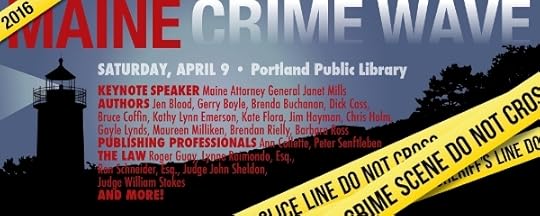Kathy Lynn Emerson's Blog, page 82
February 19, 2016
Weekend Update: February 20-21, 2016
 Next week at Maine Crime Writers there will be posts by Kaitlyn Dunnett/Kathy Lynn Emerson (Monday), Jen Blood (Tuesday), Kate Flora (Wednesday), John Clark (Thursday), and Jessie Crockett (Friday).
Next week at Maine Crime Writers there will be posts by Kaitlyn Dunnett/Kathy Lynn Emerson (Monday), Jen Blood (Tuesday), Kate Flora (Wednesday), John Clark (Thursday), and Jessie Crockett (Friday).
In the news department, here’s what’s happening with some of us who blog regularly at Maine Crime Writers:
2016 MAINE CRIME WAVE
Join Maine crime writers, publishing professionals, members of law enforcement and the judiciary, and the Attorney General of the State of Maine at the Portland Public Library on Saturday, April 9 for theme-specific craft sessions, manuscript workshops, one-on-one manuscript critiques, and fascinating panels on the law, writing about police procedure, and how debut mystery authors made their journeys.
Book sales, book signings, and networking throughout the day!
For details, see 2016 Maine Crime Wave: www.mainewriters.org
TWO MINUTES IN THE SLAMMER Open Mic Reading Friday, April 8
http://mainewriters.org/two-minutes-i...
And we’re already gearing up for 2016 events, so keep checking here. Also, if you’re looking for a program for your book group, library, school, or other organization, we’re always delighted to work with you to create a fun event. If you’ve got readers, or aspiring writers, we’ve got writers who love to talk about their craft. How about Death and Desserts? Soup and Suspense?
New writer joining us: At the end of February, MCW will be welcoming debut crime author (though not a man new to writing) Richard Cass to the blog group.
And if you missed his blog this week, Bruce Coffin just struck a deal for three police procedurals.
Kate Flora is gearing up for the April release of Roger Guay’s memoir: A Good Man with a Dog: a Retired Game Warden’s 25 Years in the Maine Woods.
An invitation to readers of this blog: Do you have news relating to Maine, Crime, or Writing? We’d love to hear from you. Just comment below to share.
And a reminder: If your library, school, or organization is looking for a speaker, we are often available to talk about the writing process, research, where we get our ideas, and other mysteries of the business. Contact Kate Flora: mailto: kateflora@gmail.com
February 18, 2016
How Agatha Christie helped me get my dishes done (and my book written)
Hi, Maureen here, NOT suffering from writer’s block.
Not that you thought I was, but anyone following my progress on the second book in the Bernie O’Dea mystery series, “No News is Bad News,” may think it because it’s…taking…so…long.
Writer’s block was the topic of a question at a recent Sisters in Crime Speakers Bureau panel I was on with fellow Maine crime writers Kate Flora and Arlene Kay. The three of us were in agreement that there is no such thing. Kate, I believe, called it self-indulgent.
The three of us were firm that writing is work, it’s a job, and you get to it, you don’t swan around with the back of your hand to your forehead lamenting that the muse has not come to visit.
Writing IS work. Fun work, but still work. And it’s easy to avoid doing it, for a lot of reasons. Don’t think this is too weird,but it scares me a little. It scares me because I know how tangled my writing process is, how much agony and panic I’ll go through and how difficult it will be to get to the end. Kinda makes me not want to start.
I never thought about the writing process at all before I started writing “Cold Hard News,” my first mystery novel.

Writing? This recent “Adam@Home” may make you laugh and cry at the same time.
I knew about my writing process as a journalist, but that’s totally different and a blog for a different day. But when it came time to finally write my first mystery novel after putting it off for decades, I was lost. I won’t go through all the agonizing back and forth I’ve written about here before, except to say Stephen King’s “On Writing” finally kicked me in gear with the message, basically, to shut up, sit down and write already. (A familiar theme, right?)
So I did. And I found a writing process. A tortuous one. I don’t outline. I start writing. I try to “get the story down,” as I call it, skipping over transitions, scenes, not paying a lot of attention to the words I use or how they’re arranged. Things begin to reveal themselves. As they do, I go back to what I’ve written and start refining it, adding in clues and other scenes, adjusting characters and situations. I also go forward with scenes, writing scenes that spring forth in my mind with no idea where they’re going to go or how they fit. I go back, I go forward, I rework. There are a lot of legal pads around the house with scenes, dialogue, ideas. Things I’ve written at four in the morning without my glasses on that don’t make sense.
Even with all that, I still wasn’t quite sure how the plot was going to work it self out. As tens of thousands of words piled up, I just hoped the book would form itself into something that made sense before I lost my mind.
I don’t say that lightly. I don’t want to sound like a dilettante or some kind of nut, but I need to be able to totally absorb myself in the writing for hours and days for it to really take shape and my brain to do what it needed to. I couldn’t do it in the hour spurts I was writing in because of the long, energy sapping days of my day job. But the panel with Kate and Arlene was a reminder to stop, basically, swanning around lamenting how HARD IT IS TO WRITE and just friggin’ do it.
After that panel a couple weekends ago, trying to ignore the panic, self-doubt and fear that the 70,000 or so words I had so far was a steaming pile of crap, I decided to make myself feel better by finding an Agatha Christie quote I remembered from that had made me laugh. Something like, “Now all you have to do is go back and throw in a few clues and write it and you’re all set.” I found it, it’s from “Mrs. McGinty’s Dead,” and it’s: “There you are, Ariadne…The whole plot of your next novel presented to you. All you’ll have to do is work in a few false clues, and—of course—do the actual writing.”
While looking for that quote, I came across this, also from Christie: “The best time for planning a book is when you’re doing the dishes.”
The squeamish may want to stop reading at this point. If you’re not already wondering a little about whether what I really need is a padded room, this may convince you. I have had an issue for a while recently with getting the dishes done. That’s not a euphemism for something interesting. I really just can’t seem to get the sink and counter empty of dirty dishes. I’m sure I could unravel why if I really thought about it, but lack of time and energy are the superficial excuses. The day I read that Christie quote I’d also stumbled upon a few rare days in a row off from work. I came up with a plan: I knew that my writing process was to write whether it seemed to be coming together or not, then to let it fester in my brain letting scenes, transitions and plot lines pop up. So I would write for a couple hours, then do the dishes. And see what happened. If nothing else, at least it was finally a way to get the dishes done. I’m embarrassed enough to say that there were enough dirty dishes to be able to repeat the process several times.
I also found it works for vacuuming and cleaning the bathroom. Not so much going through the months’ worth of unopened mail on the kitchen table, though — too many distractions.
I also knew, now that I was soaring past 82,000 words, it was time to outline. There is no way for me to keep track of scenes, plot (what there was of it), who said what to whom and the troubling flashback chapters without it. Here’s how I outline: I go through and write down every chapter and scene — they’ve already been written, understand — what happens in the scene plot-wise, if new characters are introduced, and that type of thing. (Don’t tell me to try Scrivener, trying to figure that out, including buying a used copy of “Scrivener for Dummies” that may as well have been in Greek, added about six months of procrastination last year).
After that outline is written in longhand, I get out post-it notes and a big piece of cardboard. Since my book is third person with several points of view, I do a different color for each point of view. Each scene goes on its own note so I can see where it is and move things around as needed.
I spent a lot of time doing this over the past weekend.
And then I took a break and watched four episodes of “Better Call Saul” in a row followed by two “Datelines” and a “48 Hours Mystery.”
And somewhere over the course of two days, the miracle I’d been waiting for happened.
I knew it was coming. Little tremors had started — waking up in at 3 in the morning with an idea for a scene or a piece of plot. Driving home from work and having to pull over to tap out a line of dialogue on my phone. But suddenly, with hardly any more warning than that, the whole structure of the plot that I’d been missing, plus some missteps I’d taken and would have to readjust (including taking back a murder), appeared in my head, full-blown. I am not making this up.
Sure, there’s still a lot of work left to do. I have to go back and fix all the writing. Throw in some clues. Add transitions. Write the final six or so chapters. And yeah, then I’ll have a first draft that will get poked and pulled by my reading crew, and I’ll have to go back and rework it all.
But believe it or not, I feel like I’ve rounded third and am headed home.
And there are fewer dirty dishes in the sink than there have been in a year.

Thanks Agatha Christie, for a sink empty of dirty dishes.
Maureen Milliken is the author of Cold Hard News, the first in the Bernie O’Dea mystery series. Follow her on Twitter: @mmilliken47, like her Facebook page: Maureen Milliken mysteries, sign up for email updates at her website and read her blog: maureenmilliken.com.
It Takes A Village
Bruce Robert Coffin here with my monthly Maine Crime Writer’s blog. In November a number of things happened that propelled my career as a novelist into high gear. A perfect storm of publication, if you will. I attended the New England Crime Bake, an annual three day crime writer conference where writers, editors, publishers, and experts converge to discuss, teach, and inspire all things writing. This was only my second time at this conference. My goal this year was to try and land a literary agent. Someone who would take the manuscript of my first novel and assist me in achieving the next of my writing goals, becoming a real live published novelist.
I made the two and a half hour drive down to Dedham, Massachusetts with fellow crime writer and friend Brenda Buchanan. If you haven’t read Brenda’s Joe Gale mystery series, you should. Start with the debut, Quick Pivot. It’s excellent! Anyway, it was a great way to pass the time and get to know each other better. Brenda and I discussed life, loves, and writing. We may have even inadvertently solved many of the world’s problems, but made a promise not to share our solutions. Not yet. Better to hold something back for future blogs. Want to know what we came up with? Well, you’ll just have to check back in at Maine Crime Writers. Often. We also discussed, The Reaping, the manuscript for my first novel (which most likely will see a different moniker before publication). Brenda was kind enough to read it and offer advice on ways to make it better.
As we checked into the hotel, folks I’d met at last year’s conference immediately welcomed us, anxious to swap stories about what we had all been up to. My head was spinning, some of this may have been due to Brenda and I solving the world’s problems. We picked up our packets and informational material, dropped belongings into our rooms, and quickly found the bar, our watering hole and unofficial writer’s base of operation. In short order we found ourselves surrounded by fellow Maine writer’s Dick Cass, Kate Flora, Chris Holm, Paul Dorion and others. These folks comprise just a small part of the community to which I now belong. Some of the most selfless, caring, and driven people I have ever known. They have become my surrogate family of sorts.
Following my recent leap from law enforcement, after nearly three decades, I found myself without that connection. Missing that daily interaction with like-minded folks which make life so special. Admittedly, there were days when I wondered what the hell I was thinking retiring from the safe and familiar confines of my law enforcement surroundings. Don’t get me wrong, I’m always welcome to stop by and catch up. And they still occasionally remember to invite the “retired detective sergeant” to functions and get-togethers, but it’s not the same. There’s no way it could be. I’m now on the outside looking in. They’ve moved on. Having new adventures, creating new stories, while I’m left with the same old tired “war stories.”
My new family, the crime writers, live and breathe writing, the craft, the nuances, the business. In many ways this new family is like my old, they come from all walks of life, as varied in age and beliefs as they are in styles and goals. And they work. All the time. While the members of my old family were on call 24/7, the new ones never sleep. The creative mind doesn’t allow a good night’s sleep. The muse whispers at the strangest and most inconvenient of times. Trust me, I know. There’s always a story or an idea that needs to be told and written down, before it evaporates into the mist from whence it came (Okay, you got me. I was dying to use that word.). But perhaps the best part is that we each long for the others to succeed. As if the collective good benefitted from our individual successes. And maybe it does. Whenever something great happens to one, it does happen to all. I’ve seen no jealousy, no pettiness, no backstabbing, just legitimate joy when things go well. We go to hear each other speak, read each others blogs and manuscripts, provide feedback, and generally act as each other’s glee club. And it’s not because we’re obliged to but because we want to. Occasionally, we will even be there to talk each other off the proverbial ledge. And beleven me, it’s one steep precipice.
Perhaps the biggest difference between my old family and my new is that we don’t see each other everyday. Writing is a solitary business. Producing the amount of work necessary to keep up with the demand often requires a level of hermit-like behavior. We stay in touch by phone or e-mail or by private messaging. But when we do get together it’s like zero time has passed. Like we’d seen each other only yesterday. It’s a pretty cool feeling to be part of something so special. And in my case I’ve been fortunate enough to have been part of two such families. Actually, make that three. I nearly forgot to count my biological one. Whew. Sorry guys!
And once again I’ve managed to stray from the topic at hand. Remember I was hoping to land an agent?
On Saturday afternoon at the Crime Bake, I participated in an agent “pitch session.” Literary speed-dating if you will. Each of us in the hunt were given three minutes to make a lasting, and hopefully positive, impression. One by one I whipped through the agents like beer samples at a brewer’s fest. I wowed them with my novel. Knocked their socks off with my law enforcement history. Entertained them with my witty prose. Or had I? As nervous as I was, I really have no idea what I actually said. Likewise, I barely remember what any of them said to me. What I do remember is that I must have done something right, because three different agents asked me to send a copy of my manuscript for their review. Three! I’d have been happy just to have been a runner up speed-dater. Maybe a nice honorable mention. If the writer they’d really wanted stood them up, I’d be waiting in the wings. Willing to pay for the gas if only they’d take my manuscript home.
Suddenly, I found myself in the strange and exciting position of having more interest in my novel than I could have ever imagined. My brain was racing. Would any of them like it once they started reading? Was it really good enough? Would they laugh at the ex-cop? Did you honestly think you were a novelist? Ha! What had I done? What was I thinking?
As you may have guessed, sleep did not come. Most of Saturday night was spent in a strange hotel room tossing and turning on a strange bed. At two o’clock I contemplated getting out of bed and going to the lobby to get some writing done, followed by further contemplation at three, and again at four. Finally, exhausted, I must have fallen asleep because my back-up alarm woke me. Slept right through the first. I had to get my head on straight. I had 90 minutes before I was expected to get up on stage in front of 250 writers to teach a “getting it right” session about police tactics along with fellow novelist and ex-cop Brian Thiem. I was a wreck. Quickly, I brewed myself a cup of java then jumped in the shower. No sooner had I done so when I began hearing text chimes, and e-mail alerts, and my cell phone ringing. More message chimes. WTH? Had there been an accident? Had someone died? I hurried from the shower to check the phone. All of these attempts to reach me had been at the behest of one of the agents I’d spoken with the previous afternoon. The agent wanted to discuss representation!
Literally, a million different emotions swept over me, excitement, fear, apprehension, etc. What should I say? What should I do? Long story short, I met the agent over coffee. We had a great conversation, she offered to represent me, and I asked for time to think about it. What? Think about it? Told you I was exhausted.
The 2015 New England Crime Bake has ended. And it was a memorable one. I am thrilled to tell you that I am now represented by Paula Munier of the Talcott Notch Literary Agency. I think it’s a good fit for both of us and, if possible, she seems more excited about this partnership than I do! FYI, it’s not possible.
At this point you may be wondering what the hell does any of this has to do with the title of this blog. Well, I’ll tell you. My point is, it does indeed take a village. As good a writer as I hope I am, I would never have reached this point were it not for the support of my many friends and family. More specifically, my new found family of crime writers. Endless coffees, and phone calls, and emails pushing me forward toward that elusive goal of a published novel. From the ruthless editorial comments and revision suggestions of Doctor Kate Flora (all of which were spot on, I might add), to the kind words and prodding of Brenda Buchanan and Dick Cass, to the sage advice of Barbara Ross and Al Lamanda on queries and agents, each of them a necessary and valuable part of reaching my goal.
It truly does take a village and I am very lucky to have settled in this one!
February 16, 2016
True Love Endures
By Brenda Buchanan
By the luck of the draw my February post falls three days after Valentine’s Day, but I’ll tell you a love story anyway.
Seventy-four years ago, these crazy kids eloped.
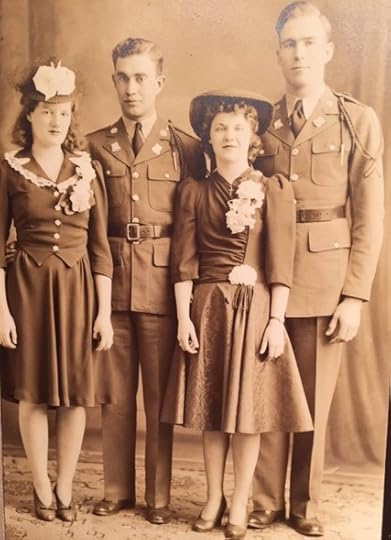
My Mom, my Dad, their friends Sis and B.G.
On the left are my folks, William “Buck” Buchanan and Irene Kane Buchanan. He was 22. She was 20.
The other two are Sis and B.G., their friends who also eloped that day. It was February 14, 1942 and love was in the air, intensified by the knowledge that both men were about to be shipped overseas.
My father and B.G. were members of the United States Army’s First Infantry Division—known as the Big Red One—training at Fort Devens in Central Massachusetts. My parents met on the base, where Mom had a war-time job delivering mail. She was vivacious young woman, the fifth of six children raised by Irish Catholic immigrants in a nearby mill town. Her mail delivery gig involved zipping around Fort Devens on a motorcycle with a sidecar, and it’s no surprise she caught my father’s attention. Mom was an auburn-haired looker with a fun-loving personality. I never got a satisfactory answer about what most attracted her Dad, but I think it was his soft spoken manner and big heart. Or perhaps those beautiful brown eyes.

My dad, William Buchanan
They’d been a steady couple since the previous year, but Mom had never brought him home to meet her father. She knew better. My father had been raised Methodist in Western North Carolina/East Tennessee, but he may as well have come from the moon as far as my tough-minded grandfather was concerned. John Austin Kane’s wife had died of cancer years earlier and his eldest daughter had joined the convent. He was not about to allow his next daughter to marry someone who wasn’t Catholic.
So Irene and her handsome Buck eloped, together with their friends. In a double wedding ceremony at a nearby Catholic church where each couple served as the other’s maid of honor and best man, they pledged their eternal love. Then my folks took the train to New York City for a weekend honeymoon, thrilled to have defied the forces that attempted to put a brake on their love.
On Sunday they returned to my mother’s hometown of Fitchburg and walked from the train station to my grandfather’s house. There my dad met his father-in-law for the first time, a meeting that reportedly went quite well. Dad already had converted to Catholicism, which must have helped, but I expect it was his quiet confidence that won my stubborn Irish grandfather over. That, and my mother’s evident love for her new husband.
He got his orders that spring, landing first in Tunisia, then Sicily, and finally England, where the Big Red One (“the point on the spear at Omaha Beach”) prepared for D-Day. Six days after that historic invasion my father was involved in a firefight in the Cerisy Forest that earned him a Silver Star for valor.
As proud as I’m sure my mother was of his medals, she must have lived with her heart in her throat in those first years of their marriage, praying for him to come home in one piece.
That finally happened in mid-1945. They settled down in her hometown of Fitchburg, built a small business together and raised four kids.
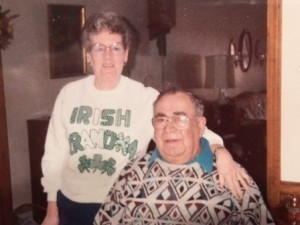
Irene and Buck, 50 years later
They were getting ready to celebrate their 50th wedding anniversary on Valentine’s Day in 1992 when my father fell suddenly, seriously ill. Seven weeks later he died at the age of 72, having had the opportunity to say goodbye to his children and grandchildren (though one was subsequently born) and most importantly, to his beloved wife.
She is 94 now, and her illness makes it difficult for her to communicate. But on Sunday, when my sister told her that it was Valentine’s Day—her 74th anniversary—a wave of emotion washed over Mom’s still-beautiful face.
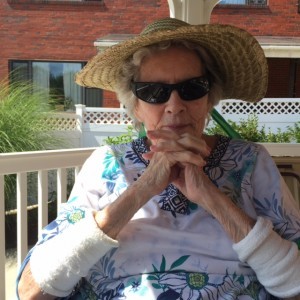
My mom, one fine day last fall
True love does indeed endure.
February 15, 2016
Layering Images … and Words
Lea Wait here.
Visitors to art galleries will usually see a piece of paper near each artist’s work called an “Artist’s Statement;” an explanation in words of what the artist hopes to have said in his paintings, photographs, or sculptures. Because their goal is to speak through their work, most artists hate to prepare these statements, but they’re a part of the job. (Yes; art, like writing, is a job.)
 Last week my husband, artist Bob Thomas, re-wrote his artist’s statement. It begins,
Last week my husband, artist Bob Thomas, re-wrote his artist’s statement. It begins,
I remember reacting viscerally to the colors and textures of the ancient walls of Beirut, Lebanon, where I grew up. Sometimes I responded to the walls themselves, and sometimes to the paint and torn posters covering them more than a thousand years after they were built. Torn posters and multiple layers on walls in 1970s New York City had the same effect on me. Now when I paint, color and texture and composition are my tools.
I’ve been thinking about that paragraph. Writers aren’t required to define their work in “writers statements”; we do it through our work. Marketeers and publicists call what defines our work our brand. Critics call it our theme, or subject, or motif. No matter what genre we write in, our work is identifiable.
And, yes, we, like Bob, express ourselves in layers. (See three of his paintings embedded in this blog.) Our layers are parallel plots and sub-plots; places and words chosen to reflect the emotions of our stories. Like artists, we use colors and textures to deepen our writing. We use the past to add depth, either through our characters’ backstories, or by historical references.
We include details from nature, from migrating birds to spring dandelions to sunsets to drifting snowflakes, to add mood and definition. Or we set our stories inside the kaleidoscopic colors and sounds of a modern-day shopping mall or city street, where the world is created by people, not nature. What our characters hear and touch and taste … and what they experience … add more layers.
 In my Shadows of a Down East Summer the 1890 diary of a young Maine woman who posed for Winslow Homer opens a window to late nineteenth century New England and leads the reader on a path through history. Events in 1890 changed the way individuals and families saw themselves, and those images and perceptions were passed down through families, each generation adding to and changing the story to meet their own needs and expectations. In Shadows of a Down East Summer those changes result in a murder today.
In my Shadows of a Down East Summer the 1890 diary of a young Maine woman who posed for Winslow Homer opens a window to late nineteenth century New England and leads the reader on a path through history. Events in 1890 changed the way individuals and families saw themselves, and those images and perceptions were passed down through families, each generation adding to and changing the story to meet their own needs and expectations. In Shadows of a Down East Summer those changes result in a murder today.
Although painting and writing can be private experiences, most artists and writers choose to present the result of their work to others. 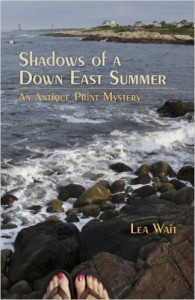
In both cases, the viewer, or reader, or critic, adds the final layer to the work: their interpretation of what the craftsman was saying, and how successfully it was accomplished. As Bob wrote in his statement, My goal is to hook the viewer; to provide a visual experience that he or she can turn into an emotional experience.
Art, like life, does not exist independently. It is made of layers of past and present visions, thoughts, moments, and, yes, stories. It is our job, as their creators, to dig as deeply as we can, to enrich our work as much as we can, and to present our viewers or readers with as intense an experience as we can. By doing that, we give our work life.
Lea Wait writes two mystery series: the Shadows Antique Print Mysteries and the Mainely Needlepoint mysteries. She also writes historical novels for ages eight and up set in the nineteenth century. For more information about Lea and her books, see her website and friend her on Facebook and Goodreads.
A Key West House Tour
By Barb Ross, sad because I only have two more weeks in paradise
Last summer I wrote about the Boothbay Harbor House and Garden tour. At the time I disclosed that in addition to a love of old houses and beautiful houses, I go on these tours because I am one noisy parker.
In Boothbay, at least I can say I’m scouting locations for scenes in the Maine Clambake Mysteries. Here in Key West, I have no such excuse. I’ve been going to house tours here for years and loving them.
Key West is such a mystery. Sometimes you walk through a front door and find that what looks like three distinct properties are actually a big house, a guest house and a pool house with an enormous pool joining the lots. And then you look out of the window of that $6 million dollar house and the house next door is falling down, it’s yard a tangle of weeds, old cars and feral chickens. That’s Key West.
The tours are run by the Old Island Restoration Foundation, the main organization dedicated to historic preservation in Key West. Let’s take the tour.
This house is in the Truman Annex. This whole neighborhood was built or restored in the 1980s on former military land, named for Harry Truman’s “Little White House,” on the grounds. It’s a luxurious five bedroom, five bath house.
 I love these little vest pocket pools, called dipping pools in Key West, shoe-horned in because land is scarce. This one is fairly large by local standards.
I love these little vest pocket pools, called dipping pools in Key West, shoe-horned in because land is scarce. This one is fairly large by local standards.
 This house is a parsonage, home to the Methodist minister at the church next door. The house was built in the 1870s at the height of Key West’s wealth from cigar manufacturing.
This house is a parsonage, home to the Methodist minister at the church next door. The house was built in the 1870s at the height of Key West’s wealth from cigar manufacturing.
The architect built his own house across the street. (Below).

 The church was originally wood, but was clad in stone between 1877 and 1892 as donor’s funds permitted.
The church was originally wood, but was clad in stone between 1877 and 1892 as donor’s funds permitted.
 This house was built on the street originally called Gruntbone Alley, which was where the islanders discarded grunt fish bones. A storm surge from a hurricane in 1844 wiped out almost all the buildings on the island, but it also washed away the grunt bones, which made room for new settlers from the Bahamas to build on the street. This house was built in the 1850s. During a renovation in the 1990s, the original clapboards, with their many layers of paint, were pulled off the outside and turned around, unpainted side out.
This house was built on the street originally called Gruntbone Alley, which was where the islanders discarded grunt fish bones. A storm surge from a hurricane in 1844 wiped out almost all the buildings on the island, but it also washed away the grunt bones, which made room for new settlers from the Bahamas to build on the street. This house was built in the 1850s. During a renovation in the 1990s, the original clapboards, with their many layers of paint, were pulled off the outside and turned around, unpainted side out.
 The house was built on these wooden pegs which have since petrified. Imagine that in Maine.
The house was built on these wooden pegs which have since petrified. Imagine that in Maine.
At the back of the house is an addition with a covered outdoor kitchen and sleeping loft.
 This house was built for his family by a lighthouse keeper who worked out on a reef fifty miles from the island. His work schedule was two months on, one month off, but that assumed the weather permitted. The property, like many in Florida, was bank-owned in 2009. The new owners virtually rebuilt it.
This house was built for his family by a lighthouse keeper who worked out on a reef fifty miles from the island. His work schedule was two months on, one month off, but that assumed the weather permitted. The property, like many in Florida, was bank-owned in 2009. The new owners virtually rebuilt it.
 This house is not in Old Town, but in the Casa Marina district, named for a resort hotel there built by Henry Flagler. The lots in the area were divided in the 1920s, but the Great Depression intervened and most of the houses weren’t built until the 40s. The lots are bigger in this part of town, but it’s still an easy walk to the beach. This house was owned by socialite Floy Vance Thompson who gave parties here into her 90s. She and her husband who was a prominent Key West family were introduced by Ernest Hemingway and his wife at their finca in Cuba.
This house is not in Old Town, but in the Casa Marina district, named for a resort hotel there built by Henry Flagler. The lots in the area were divided in the 1920s, but the Great Depression intervened and most of the houses weren’t built until the 40s. The lots are bigger in this part of town, but it’s still an easy walk to the beach. This house was owned by socialite Floy Vance Thompson who gave parties here into her 90s. She and her husband who was a prominent Key West family were introduced by Ernest Hemingway and his wife at their finca in Cuba.
I hope you’ve enjoyed this tour of Key West. I wish they’d let us photograph the interiors.
February 12, 2016
Weekend Update: February 13-14, 2016
 Next week at Maine Crime Writers there will be posts by Barb Ross (Monday), Lea Wait (Tuesday), Brenda Buchanan (Wednesday), Bruce Coffin (Thursday), and Maureen Milliken (Friday).
Next week at Maine Crime Writers there will be posts by Barb Ross (Monday), Lea Wait (Tuesday), Brenda Buchanan (Wednesday), Bruce Coffin (Thursday), and Maureen Milliken (Friday).
In the news department, here’s what’s happening with some of us who blog regularly at Maine Crime Writers:
Registration is now open for Maine Crime Wave, April 9 in Portland, Maine. Check out the details at http://mainewriters.org/2016-maine-crime-wave/
Notice how many of the authors listed as presenters are present or past bloggers here at Maine Crime Writers. We are well represented!
Bruce Coffin is too shy to share this, but we’re thrilled to repost this news from Facebook page:
I am pleased to announce that late yesterday afternoon I received an email from Otto Penzler, editor of Best American Mystery Stories, informing me that my short story, “Fool Proof,” which appeared in Best New England Crime Stories 2016, has been selected for inclusion in the 20th edition of Houghton Mifflin Harcourt’s The Best American Mystery Stories 2016.
This anthology, slated to be released in early October, contains 20 mystery stories regarded as being the most outstanding to have been originally published in North America during the 2015 calendar year.
Our own Barbara Ross was one of the editors of Red Dawn, Best New England Crime Stories, in which Bruce’s story originally appeared. As Barbara noted: Her tenure as an editor at Level Best began with an Edgar nomination for Maine writer Judy Green, and ended with Bruce’s story being chosen for Best American Crime Stories.
It’s a simple fact: there are WONDERFUL writers in Maine
Speaking of wonderful writers, if you’d like to win a handful of books by writers we like, leave a comment to this weekend update. And please share the news about the Maine Crime Wave far and wide.
An invitation to readers of this blog: Do you have news relating to Maine, Crime, or Writing? We’d love to hear from you. Just comment below to share.
And a reminder: If your library, school, or organization is looking for a speaker, we are often available to talk about the writing process, research, where we get our ideas, and other mysteries of the business. Contact Kate Flora: mailto: kateflora@gmail.com
February 11, 2016
Please Stand By
 Hey, people, are you reading me? Sorry the connection’s lousy. It’s Chris Holm, broadcasting from my editing bunker. I’m afraid my post is gonna be a little slight today, because I’m in the home stretch of a massive editing jag. What was that? “Mutt rawr poo dead nit zing?”
Hey, people, are you reading me? Sorry the connection’s lousy. It’s Chris Holm, broadcasting from my editing bunker. I’m afraid my post is gonna be a little slight today, because I’m in the home stretch of a massive editing jag. What was that? “Mutt rawr poo dead nit zing?”
Sorry. I think my tin cans need new string. I’m pretty sure you said, “What are you editing?”
I’m working on the second Michael Hendricks book. (If you’ve been in a bunker of your own for the past six months, you can find out about the first Michael Hendricks book, THE KILLING KIND, here.) It’s called RED RIGHT HAND, and it’ll be out September 13th courtesy of the fine folks at Mulholland Books. Here’s what it’s about:
If the good guys can’t save you, call a bad guy.
When viral video of a terrorist attack in San Francisco reveals that a Federal witness long thought dead is still alive, the organization he’d agreed to testify against will stop at nothing to put him in the ground.
Special Agent Charlie Thompson is determined to protect him, but her hands are tied; the FBI’s sole priority is catching the terrorists before they strike again. So Charlie calls the only person on the planet who can keep her witness safe: Michael Hendricks.
Once a covert operative for the US military, Hendricks makes his living hitting hitmen… or he did, until the very organization hunting Charlie’s witness—the Council—caught wind and targeted the people he loves. Now Hendricks is determined to take the Council down, even if that means wading into the center of a terror plot whose perpetrators are not what they seem.
It’s available for pre-order on Amazon and Barnes & Noble, if you’re interested. Or you could request it from your local independent bookseller.
But enough about me. It’s been a good week for MCWers. Yesterday, Brenda Buchanan launched TRUTH BEAT, the spectacular third installment of her can’t-miss Joe Gale mystery series. And Bruce Coffin got word that his short story “Foolproof” was selected to appear in THE BEST AMERICAN MYSTERY STORIES 2016, edited by Elizabeth George and Otto Penzler! “Foolproof” first appeared in BEST NEW ENGLAND CRIME STORIES 2016: RED DAWN, which was co-edited by our very own Barb Ross. Congratulations all around!
February 10, 2016
What’s In a Name?
Dorothy Cannell: Call me presumptuous but when it comes to my characters I am in  disagreement with William Shakespeare’s assertion that ‘a rose by any other name smells just as sweet.’ Before putting type to paper I spend – could be said waste – an exorbitant amount of time endeavoring to fit or contrast first and last names to personality, physical appearance, means of employment, mannerisms, etc. This being the case I shouldn’t need to make the number of changes midstream that I invariably do.
disagreement with William Shakespeare’s assertion that ‘a rose by any other name smells just as sweet.’ Before putting type to paper I spend – could be said waste – an exorbitant amount of time endeavoring to fit or contrast first and last names to personality, physical appearance, means of employment, mannerisms, etc. This being the case I shouldn’t need to make the number of changes midstream that I invariably do.
One of the causes for this is suddenly realizing I have a couple, if not more, similar sounding names e.g. – Pilchard, Purdy, Pruitt, that will likely cause the reader to have to flip back through prior pages to see who I am talking about. Another is simply frivolous. A name will pop into my mind. I had a teacher called Miss Holdforth, met a Mrs. Lovely and Mr. Snidge – names too delightful not to be used for no other reason than to indulge myself. This said, the major disruptive factor to name choice is that characters often refuse to toe the line upon arriving on the scene.
In the book I am currently writing the new vicar of St. Peter’s Church in Dovecote Hatch 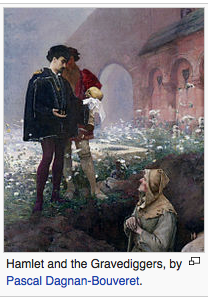 was to be Adrian Macready, a handsome thirty-seven-year-old bachelor with fair hair and dark eyebrows. He stuck to his assigned marital status and eyebrows, but had chosen not to be a Scot. His hair has deepened to brown, and handsomeness was reduced to rugged good looks. He introduced himself as Aiden Forrest – the Adrian making for one R too many. There was no point in arguing with him. It would have made for more effort changing him from masterful to meek.
was to be Adrian Macready, a handsome thirty-seven-year-old bachelor with fair hair and dark eyebrows. He stuck to his assigned marital status and eyebrows, but had chosen not to be a Scot. His hair has deepened to brown, and handsomeness was reduced to rugged good looks. He introduced himself as Aiden Forrest – the Adrian making for one R too many. There was no point in arguing with him. It would have made for more effort changing him from masterful to meek.
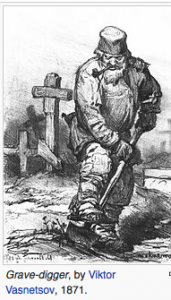 The sexton cum grave digger was set up in my head as Ezra Dewhurst – think hearse – a gaunt curmudgeon with a grim laugh and a hollow cough. But who showed up was a stout, cheery fellow incapable of not making himself helpful, welcome or not. After the initial irritation I was quite pleased because the alteration of his personality gave me the glimmer of an idea of how he could further serve the plot. On inquiry he informed me kindly his name was Jock Merriweather
The sexton cum grave digger was set up in my head as Ezra Dewhurst – think hearse – a gaunt curmudgeon with a grim laugh and a hollow cough. But who showed up was a stout, cheery fellow incapable of not making himself helpful, welcome or not. After the initial irritation I was quite pleased because the alteration of his personality gave me the glimmer of an idea of how he could further serve the plot. On inquiry he informed me kindly his name was Jock Merriweather
And that’s just the start of who in this book wanted to be other than intended. I wonder if other writers face these insurrections? Warning: There can be unfortunate results if alterations are not thoroughly checked. Global search and replace has its limitations. In my book Sea Glass Summer, I had a dog named Pocket because he was small enough to be put in one. Midway through I changed him to a large dog named Jumbo. This resulted in phrases such as “he stuck his hand in his Jumbo.”
Happy February
Dorothy
Come Back, Margaret Chase Smith
Kate Flora: Back when I was in high school, there was a day when we staged mock political debates. I was pretty apolitical back then, but I was thrilled to be chosen to play Margaret Chase Smith. I only have a vague memory of trying to find something to wear that was appropriately “senatorial” and borrowing my mother’s twinset and her pearls. I’m pretty sure I lost the debate. I remember thinking that she was a woman of great integrity and presence, and that Maine was lucky to have a woman of her courage and stature.
I am drawn back to Senator Smith these days for two reasons. First, I recently watched the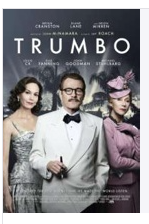 movie, “Trumbo,” about McCarthy and blacklisting, about a writer having to make a living by selling his scripts under other people’s names, unable even to claim the credit when movies that he’d written won Academy Awards. We writers are often called on to reinvent ourselves, though fortunately not usually for such appalling reasons. Second, because however much I may try to avoid the ugliness of the current political season, it is impossible to avoid the awful rhetoric that passes for political discourse these days.
movie, “Trumbo,” about McCarthy and blacklisting, about a writer having to make a living by selling his scripts under other people’s names, unable even to claim the credit when movies that he’d written won Academy Awards. We writers are often called on to reinvent ourselves, though fortunately not usually for such appalling reasons. Second, because however much I may try to avoid the ugliness of the current political season, it is impossible to avoid the awful rhetoric that passes for political discourse these days.
For those of you who haven’t read it, the speech that Margaret Chase Smith gave on the Senate floor on June 1, 1950, entitled: A Declaration of Conscience, http://www.senate.gov/artandhistory/history/resources/pdf/SmithDeclaration.pdf is an excellent reminder of some of our most cherished American values. Speaking in response to Senator McCarthy and his attacks on people he labeled “communists,” she reminded us of the “Basic Principles of Americanism:”
The right to criticize
The right to hold unpopular beliefs
The right to protest
The right of independent thought
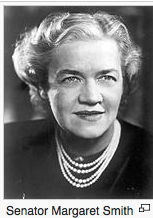 Speaking of the contest between Republicans and Democrats, she urges that her Republican party has enough genuine issues to win on that it does not need to resort to what she labels “The Four Horsemen of Calumny,” which are: fear, ignorance, bigotry, and smear. She expresses the hope that the American people will not uphold any political party that puts political exploitation above national interest. She reminds her Republican colleagues that they have the responsibility of rendering constructive criticism, clarifying issues, and allaying fears by acting as responsible citizens.
Speaking of the contest between Republicans and Democrats, she urges that her Republican party has enough genuine issues to win on that it does not need to resort to what she labels “The Four Horsemen of Calumny,” which are: fear, ignorance, bigotry, and smear. She expresses the hope that the American people will not uphold any political party that puts political exploitation above national interest. She reminds her Republican colleagues that they have the responsibility of rendering constructive criticism, clarifying issues, and allaying fears by acting as responsible citizens.
The Declaration of Conscience, joined by other senators, declares, in its final paragraph:
It is high time that we stopped thinking politically as Republicans and Democrats about elections and started thinking patriotically as Americans about national security based on individual freedom.
It is comforting, at a time when the rhetoric is about closing our borders, and hating our immigrants or people of different religions, and stifling open-minded debate for fear that it hurts people’s feelings or doesn’t conform to one particular set of values, to remember that Maine has sent clear and courageous messages (Smith was, after all, the only woman in the Senate and was punished for her courage) onto the national stage.
I didn’t win my debate. She didn’t win her bid for the presidency. But more than sixty years later, her wisdom survives. If only we could send her out on the political circuit today.


